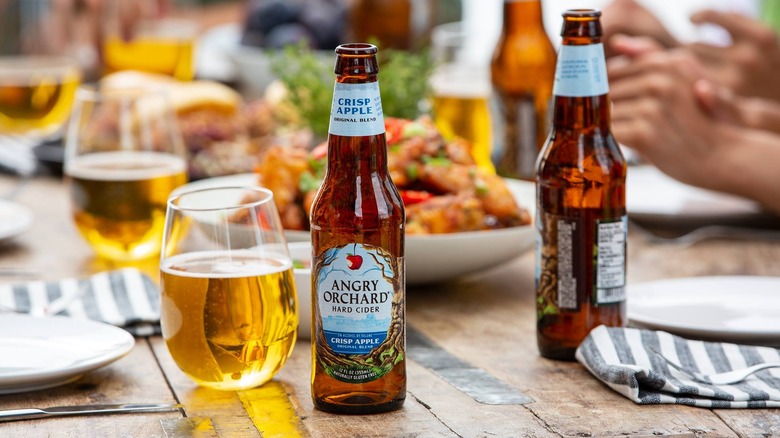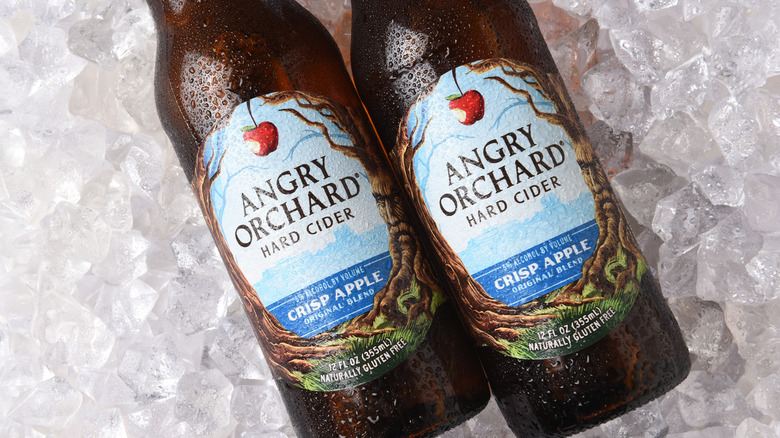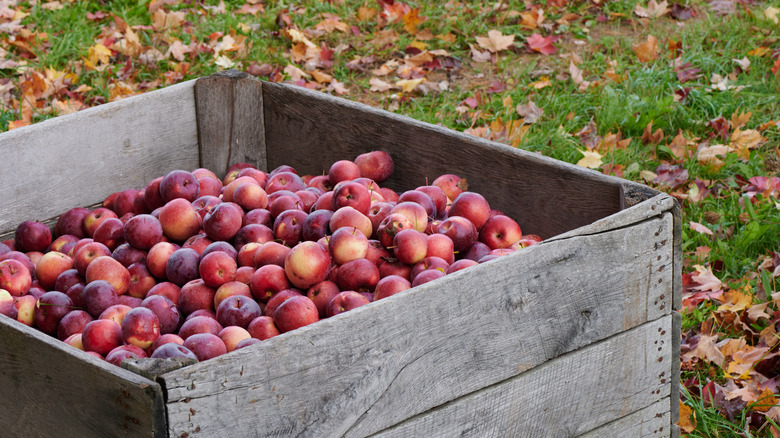What Everyone Gets Wrong About Hard Cider, According To Angry Orchard's Ryan Burk - Exclusive
In the sea of alcoholic beverages, hard cider can get a bit lost. There are many misconceptions about the drink (such as it being syrupy sweet) that have caused some to shove it aside, while others may simply not quite understand what hard cider is, what it's made from, or how it's made.
Hard cider has definitely gained popularity in recent years, in part thanks to the work of Angry Orchard (via Statista). The cider giant certainly leads the U.S. sales of hard cider, but plenty of sippers still don't understand what hard cider is at its core. Angry Orchard is on a mission to change that, working to make hard cider accessible and approachable for every palette.
To clear things up once and for all, we looked to the experts. In an exclusive interview with Mashed, head cidermaker for Angry Orchard Ryan Burk shared what people get wrong about hard cider.
Hard cider is not beer and it's not wine
First thing's first, hard cider walks a fine line between beer and wine. Hard cider is similar to wine in that it's made with fruit, but it's most commonly served like beer, causing much confusion. Though it's also often found on the tap list, the process for making beer and cider is not the same.
Much of the difference between cidermaking and beer brewing has to do with fermentable sugars. According to Burk, brewing alcohol (just like in coffee and tea) is the act of making something available. When it comes to brewing beer, this is a multistep process done with malt, water, hops, and yeast (via Liquor.com). The mash is created at the beginning of brewing, which is ultimately what creates the sugars that the added yeast can feed on. As the yeast feeds on the sugars, they're converted into alcohol.
But for hard cider, the sugar is available right out of the gate, as the apples used to make hard cider are already packed with fermentable sugar. "It's very easy, and it's also very simple sugar. So it's not like beer where there's a lot of residual sugars. We have a simple sugar, it's very fermentable," Burk explained. So while your cider might look like and be sold like beer, the process and end product are more similar wine. "The more educated we can get people on what we're actually doing, the better off we'll all be."
Hard cider uses specific cider apples
According to Burk, there's even some misconceptions around the fact that hard cider is made from apples. As difficult as it may be for some to believe that plain old apples can turn into something so delicious to imbibe, it's certainly true.
However, these probably aren't the apples you're picking up at the grocery store — cider apples are a whole different ball game. While Angry Orchard does use common varieties such as Gala, Fuji, and Braeburn (via Angry Orchard), they also utilize and incorporate specific, lesser-known varieties such as the acidic Newtown Pippin and Northern Spy to create balance. Even more interesting is that some of these types of apples are grown specifically for cider making, and how the farmer treats and harvests the fruit definitely comes into play. Burk notes that cider apples hang on the tree a bit longer and are considered important to the cidermaking industry because of that. Leaving the cider apples on the tree for longer allows the sugars and acid to further develop, ultimately providing better apples for making into hard cider.
Check out Angry Orchard's website for a complete list of its ciders and to stay tuned for new releases.


